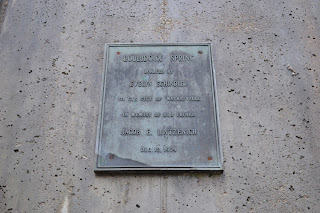I still haven't heard back from the women's shelter yet, but plan on stopping in sometime tomorrow to see if they've just had a busy week and haven't had the time to review my application. I'm anxious to talk to the manager about how I can help, but until she's ready I suppose I'll bide my time like a patient adult versus the child in me that wants to know "what's going on?!" In the meantime I've been working out, cleaning up, trying my hand at sketching, finishing up the book that's been on my nightstand for a month, and photographing anything and everything I can!
In this vein, I'm pretty sure Matt's getting exhausted by my constant need to photograph our dinner every night. I've gotten in the habit of telling him dinner's ready and then making him wait an extra 3-5 minutes as I properly plate, situate and photograph the creation. The chef in me thinks I must be doing this subconsciously, allowing time for the food to properly rest (especially in the case of our Steaks w/Red Ribbon Onions that I made the night before last). And, in all actuality, I think he's quite happy I'm using and enjoying the camera so much.
Aside from my food, I've also been getting some nice nature shots of the area as I explore Pulaski County and all of it's "Things To Do." This week I decided to venture to the Roubidoux Spring, which is located in the Roy Laughlin Park near downtown Waynesville. After photographing the site - marveling at the turquoise hue of the water even in winter - I decided to come home and do a little research, and learned a bit of interesting information in the process.
According to a website I found devoted to Missouri Springs, the Roubidoux Spring - which discharges an average 37 million gallons of water a day (57 cubic feet per second) - is the 16th largest spring in the state of Missouri. During flood conditions the spring reaches 200 cfs.
Like most springs in the state, the Roubidoux Spring originally emerged from a cave opening (which still exists). In fact, in the 1960's the private owner at the time, Don Rimbich, dug the spring and cave open to allow divers to explore the spring and it's cave source. According to another source (pun intended), the cave has been mapped as 240 feet deep and just over a mile long. And while diving is still allowed today - as long as individuals are qualified/certified cave divers - the spring entrance does not look the same as it did nearly 30 years ago.
(Photo from http://members.socket.net/~joschaper/rubedu.htm)
I can only deduce that the photo above was taken prior to 1974, when the current dam and retention wall were built above the spring in order to stop the road above from being constantly washed out. Having worked for the Corps of Engineers I know how important it is to make sure that infrastructure is safe for the populace. Still, it's interesting to see how the area has - and has not - changed over the past 27 years with the addition of the dam, and thus the constant back-flooding of the stream. I'll leave you with the remaining pictures I took to allow you to do your own comparison of what was "then" and what is "now."









No comments:
Post a Comment